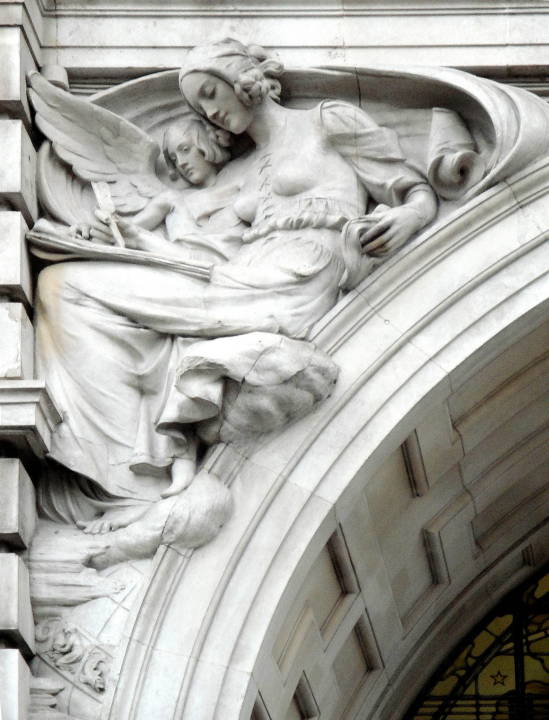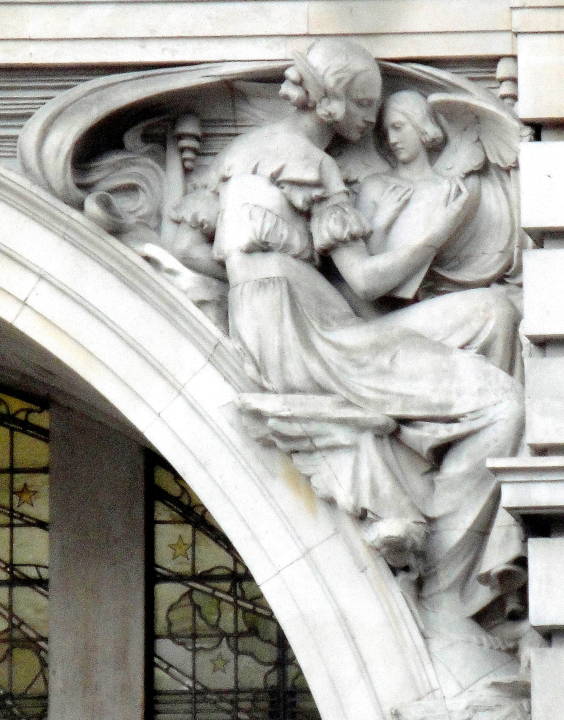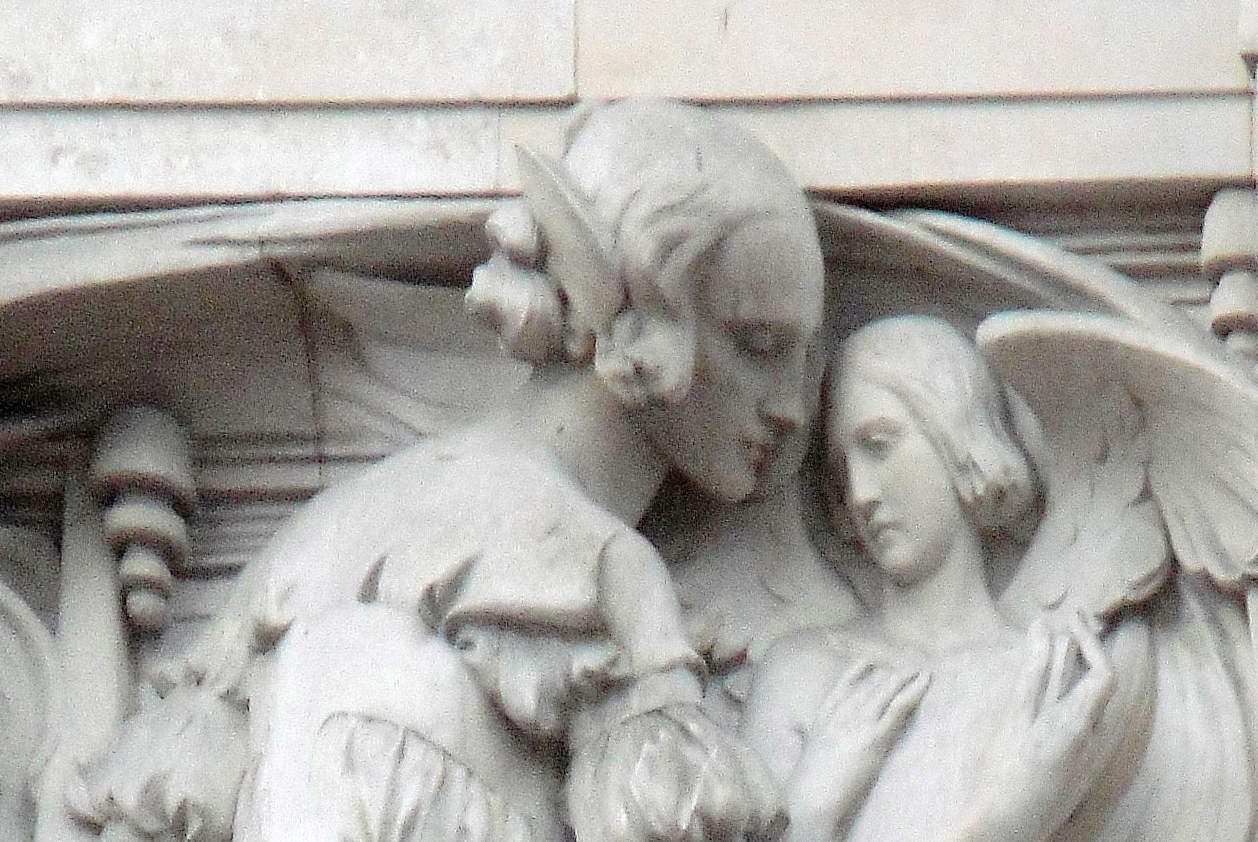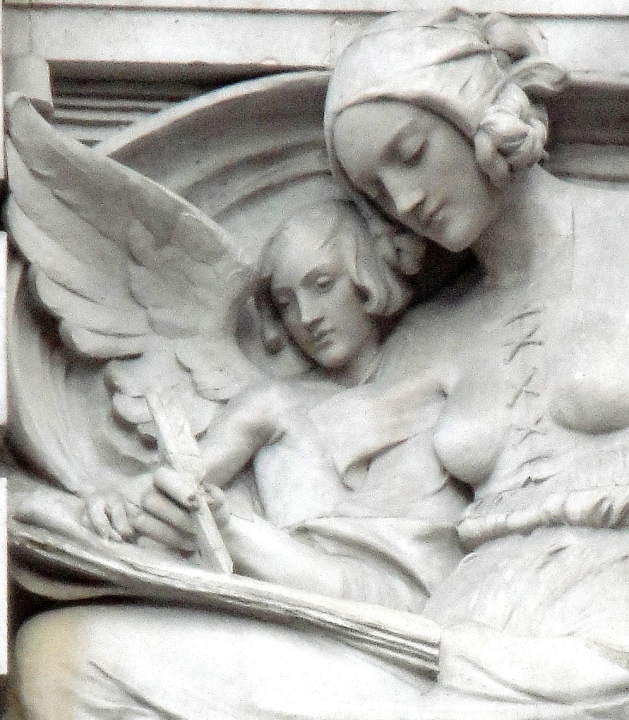
Spandrels representing the Electric Telegraph (Electricity and Engineering) by Sir George Frampton, R.A. Approxinately 3.6m high. Signed towards the bottom of the right-hand spandrel: “GEO. FRAMPTON.” Electra House (now part of the London Guildhall University). Architects: Belcher and Joass. 1900-1903. On Moorgate on the east side of the street between Finsbury Circus and London Wall, London EC2.


Two interpretations of the spandrel sculptures: The woman writing with the quill pen could be engineering — the design of the telegraphic system — while the one one the right with two glass insulators behind her could possibly represent electricity. Second, the figures could also present writing for telegraphic transmission (left) and reading the writing thus transmitted (right). Note the Art Nouveau swirling fabric-like elements in the detail juxtaposed to the glass insulators near the figures on the right. [Click on these images and those below for larger pictures.]


Left: Detail showing the glass insulators used on electric power lines, the neo-medieval-Art Nourveau design of the female figure's dress, and a typical Frampton female face. Right: Detail of the woman writing with an angelic figure looking on and perhaps guiding her hand. Note, too, that although the sculptor has covered the figure with a carefully delineated dress with lacing and a gathered fabric at the waist, he has made the blouse so form-fitting that the figure's breasts at first appear bare.
Photographs and caption material for the first photograph by Robert Freidus. Formatting, perspective correction, and commentary by George P. Landow. You may use this image without prior permission for any scholarly or educational purpose as long as you (1) credit the photographer and (2) link your document to this URL in a web document or cite the Victorian Web in a print one.]
Bibliography
Beattie, Susan. The New Sculpture. New Haven: Yale University Press, 1983.
Ward-Jackson, Philip. Public Sculpture of the City of London. Liverpool: Liverpool University Press, 2003.
Last modified 24 July 2011